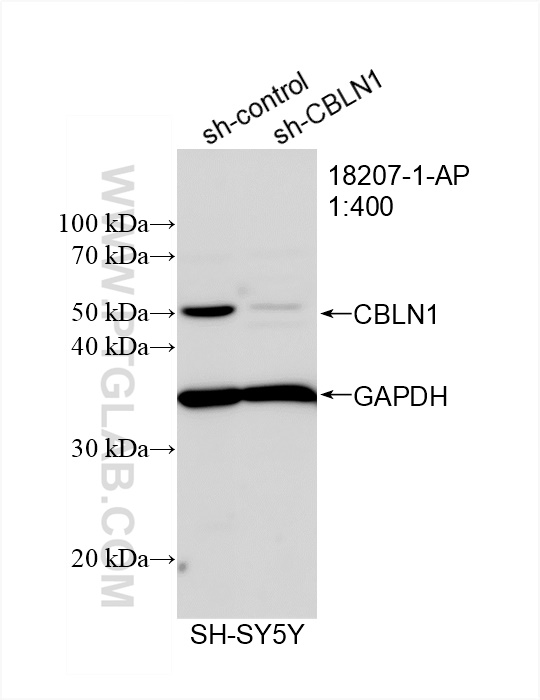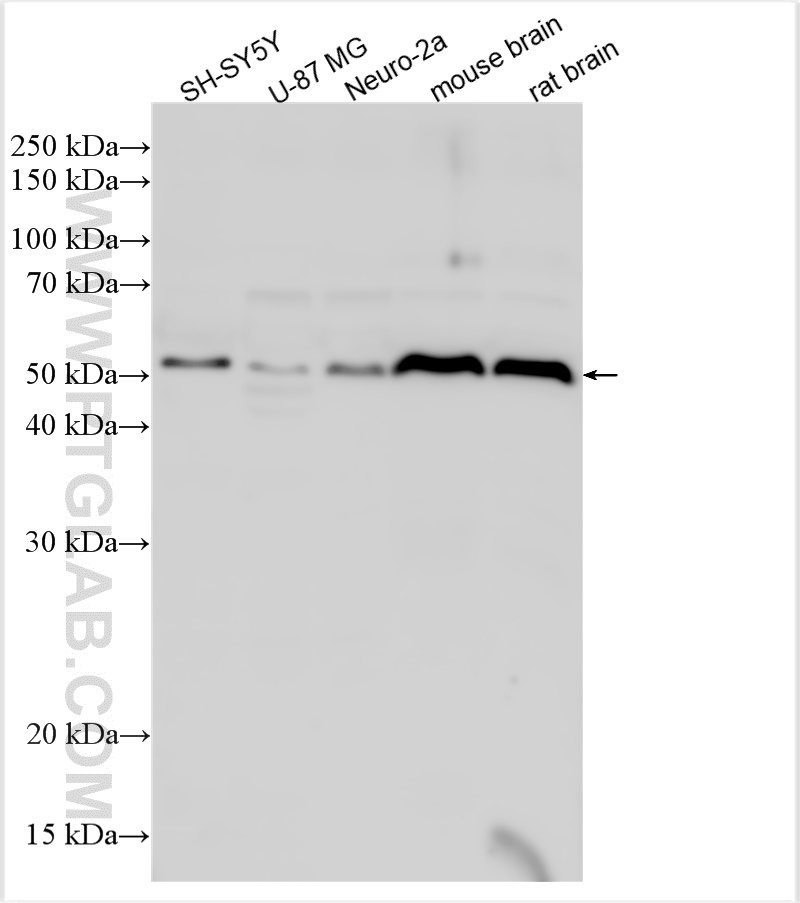验证数据展示
经过测试的应用
| Positive WB detected in | SH-SY5Y cells, U-87 MG cells, Neuro-2a cells, mouse brain tissue, rat brain tissue |
推荐稀释比
| 应用 | 推荐稀释比 |
|---|---|
| Western Blot (WB) | WB : 1:500-1:1000 |
| It is recommended that this reagent should be titrated in each testing system to obtain optimal results. | |
| Sample-dependent, Check data in validation data gallery. | |
产品信息
18207-1-AP targets CBLN1 in WB, ELISA applications and shows reactivity with human, mouse, rat samples.
| 经测试应用 | WB, ELISA Application Description |
| 经测试反应性 | human, mouse, rat |
| 免疫原 | CBLN1 fusion protein Ag12835 种属同源性预测 |
| 宿主/亚型 | Rabbit / IgG |
| 抗体类别 | Polyclonal |
| 产品类型 | Antibody |
| 全称 | cerebellin 1 precursor |
| 别名 | CBLN1, CER [des Ser1] cerebellin, Cerebellin 1, cerebellin 1 precursor, Precerebellin |
| 计算分子量 | 193 aa, 21 kDa |
| 观测分子量 | 50 kDa |
| GenBank蛋白编号 | BC093692 |
| 基因名称 | CBLN1 |
| Gene ID (NCBI) | 869 |
| RRID | AB_3669294 |
| 偶联类型 | Unconjugated |
| 形式 | Liquid |
| 纯化方式 | Antigen affinity purification |
| UNIPROT ID | P23435 |
| 储存缓冲液 | PBS with 0.02% sodium azide and 50% glycerol , pH 7.3 |
| 储存条件 | Store at -20°C. Stable for one year after shipment. Aliquoting is unnecessary for -20oC storage. |
背景介绍
CBLN1 (Cerebellin-1) is also named as Precerebellin. CBLN1 is a newly identified synaptic organizer belonging to the C1q family. Cbln1 was recently identified as the missing ligand for the orphan glutamate receptor δ2 (GluD2) (PMID: 21342763). In the cerebellum, Cbln1 is produced and secreted from granule cells and works as a strong synapse organizer between Purkinje cells and parallel fibers, the axons of the granule cells (PMID: 24607546). The glycosylation modification of CBLN1 resulted in a larger molecular weight.
实验方案
| Product Specific Protocols | |
|---|---|
| WB protocol for CBLN1 antibody 18207-1-AP | Download protocol |
| Standard Protocols | |
|---|---|
| Click here to view our Standard Protocols |

